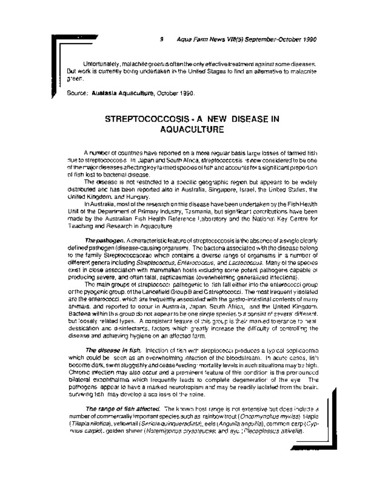| dc.contributor.author | Pakingking, Rolando V., Jr. | |
| dc.contributor.author | Usero, Roselyn | |
| dc.contributor.author | de Jesus-Ayson, Evelyn Grace T. | |
| dc.contributor.author | Logronio, Dan Joseph | |
| dc.contributor.author | Caipang, Christopher Marlowe | |
| dc.coverage.spatial | Guimaras Island | en |
| dc.date.accessioned | 2022-03-10T05:46:12Z | |
| dc.date.available | 2022-03-10T05:46:12Z | |
| dc.date.issued | 2022-03 | |
| dc.identifier.citation | Pakingking, Jr., R., Usero, R., de Jesus-Ayson, E. G., Logronio, D. J., & Caipang, C. M. (2022). Phytochemical composition, antioxidant, and antibacterial activity of the Philippine marine green alga (Ulva pertusa). International Aquatic Research, 14(1), 51–62. https://doi.org/10.22034/iar.2022.1946410.1217 | en |
| dc.identifier.uri | http://hdl.handle.net/10862/6292 | |
| dc.description.abstract | The phytochemical constituents, total phenolic and flavonoid contents, antioxidant and antimicrobial activities of the ethanolic extract of the marine green alga Ulva pertusa collected from floating fish net cages off the coast of Guimaras island, Philippines, were investigated. Qualitative phytochemical analysis revealed the presence of bioactive compounds including alkaloids, flavonoids, phenols, saponins, tannins, and terpenoids. Quantitatively, total phenolic and flavonoid contents of the extract were 20.54±2.08 mg gallic acid equivalent (GAE) g-1 and 539.07±6.36 mg rutin equivalent (RE) g-1, respectively. The antioxidant activity of the extract using 1,1-diphenyl-1-picrylhydrazyl (DPPH) assay exhibited a concentration-dependent radical scavenging capacity. Additionally, the ethanolic extract inhibited the growth of Staphylococcus aureus ATCC25923, Escherichia coli ATCC25922, Streptococcus agalactiae, Aeromonas hydrophila, A. sobria, and Vibrio harveyi in a concentration-dependent manner with strong inhibitory activity at 100 mg mL-1 concentration. Taken together, U. pertusa contains bioactive compounds that possess potent antibacterial activity and remarkable antioxidant capacities. These substances are promising candidates that may be utilized in the synthesis of novel drugs. | en |
| dc.description.sponsorship | This study was funded by the Government of Japan Trust Fund V through the Regional Disease Project (study code: FH01-F2010-T) and partly by SEAFDEC AQD. | en |
| dc.language.iso | en | en |
| dc.publisher | Springer | en |
| dc.relation.uri | https://intelaquares.tonekabon.iau.ir/article_689757_e8bb4bc10dff9d5f176441ee7959687c.pdf | |
| dc.rights | Attribution 4.0 International | * |
| dc.rights.uri | https://creativecommons.org/licenses/by/4.0/ | * |
| dc.subject | Ulva pertusa | en |
| dc.subject | Streptococcus agalactiae | en |
| dc.subject | flavonoids | en |
| dc.title | Phytochemical composition antioxidant and antibacterial activity of the Philippine marine green alga (Ulva pertusa) | en |
| dc.type | Article | en |
| dc.identifier.doi | 10.22034/iar.2022.1946410.1217 | |
| dc.citation.volume | 14 | |
| dc.citation.issue | 1 | |
| dc.citation.spage | 51 | |
| dc.citation.epage | 62 | |
| dc.citation.journalTitle | International Aquatic Research | en |
| dc.subject.asfa | Algae | en |
| dc.subject.asfa | seaweeds | en |
| dc.subject.asfa | agar | en |
| dc.subject.asfa | antioxidants | en |
| dc.identifier.essn | 2008-6970 | |
| dc.subject.scientificName | Ulva pertusa | en |
| dc.subject.scientificName | Streptococcus agalactiae | en |
| dc.subject.scientificName | Aeromonas | en |
| local.subject | Ulva pertusa | |
| local.subject | Antimicrobial activity | en |
| local.subject | Antioxidant | |
| local.subject | Streptococcus agalactiae | |
| local.subject | Aeromonas species | |




